When the weather gets hot and dry, many people get the hosepipe out and water their lawns.
Unfortunately, as simple as lawn watering is in practice, many lawn owners get it wrong. The result can include the spread of fungal disease like Red Thread, the shallow rooting of grass, the onset of moss, and the infestation of weeds and weed grasses.
So, in this article, we’re going to talk about how to water the lawn the right way.
Why is Watering a Lawn So Important?
As you know, nothing on this earth can survive without water, it’s the giver of life.
It’s the same for your grass.
Water is the vehicle grass uses to draw nutrients from the soil. It does this through the roots and uses them during photosynthesis and the production of food.
It’s also used to store sugars and carbohydrates the grass can use as food in times of need. In drought conditions or during the winter for example.
What Happens if Grass Doesn’t Get Enough Water?
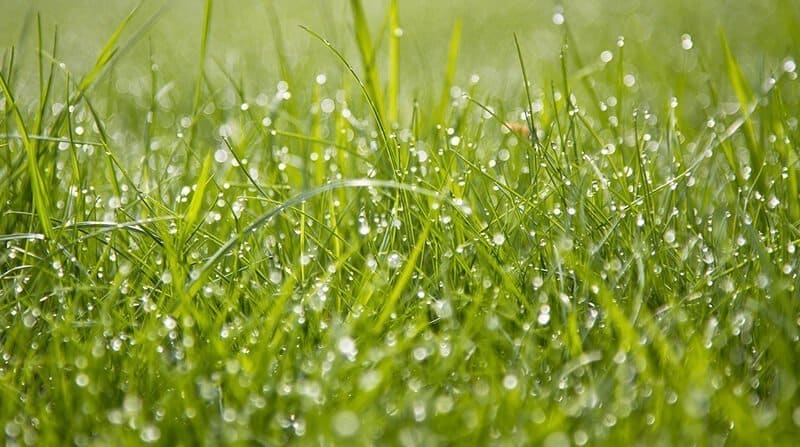
When water is in short supply, grass is less able to consume nutrients from the soil.
As a result, it is unable to photosynthesise and produce food. So it has to rely on food and water stores to survive.
Often times you’ll see the grass start to lose colour. This happens as the grass draws water, nutrients and food stores from the leaf back into the roots. One of these nutrients is Chlorophyl, which gives grass its green colour.
During drought conditions, like the one the UK suffered from in summer 2018, you’ll see the lawn turn completely brown as the grass goes completely dormant. To avoid this, you can water your lawn as part of your summer lawn care regimen.
This is a survival mechanism and in most cases is nothing to worry about. The grass will start to grow and become green again when the rains return. However, in the worst cases, the grass could die, in which case, you might need to repair your lawn when the weather is more favourable.
When You Should (and Shouldn’t) Water Your Lawn
There are several reasons for watering the lawn. In fact, there are times when watering is a must.
On the other hand, there are times when you keep the taps turned off.
So let’s look at when you should and shouldn’t water your lawn.
When to Turn The Sprinklers On
Reasons for watering your lawn include:
To Aid Recovery After Invasive Treatments
If you have;
- After you’ve scarified the lawn to remove thatch build-up
- Hollow-tined your lawn to relieve compaction and improve drainage
- Raked the lawn to remove moss
- Completely renovated your lawn
You’ll have caused a significant amount of stress and in some cases, damage. In order for the grass to grow and the lawn to recover fully, it needs a plentiful supply of water.
To Establish New Turf and Grass Seed
After;
- Laying new turf
- Sowing a new lawn from seed, or
- Overseeding as part of repair or renovation
The lawn will need water in order for the new grass seed to germinate, aid with root establishment and turfs to knit together.
Watering is the most important task when it comes to establishing a new lawn. It’s the only time you should water several times a week.
In Hot, Dry Weather
Depending on the type of soil your lawn grows in, the species of grass you have, exposure to sun or how much shade the lawn is covered by will all have an impact on when you’ll need to water.
For example, lawns with deep rooting fescues are more drought-resistant than shallower rooting ryegrasses.
During hot, dry spells, some lawns can look good for several weeks, others might need watering weekly.
So, look out for signs that your lawn needs water. These include;
-
The grass losing its green colour and starting to turn yellow
-
It loses its springiness and your footprints stay in the lawn after you’ve walked on it instead of springing back up
-
The soil starts to shrink and crack
To Avoid Fungal Diseases Like Dry Patch
Sometimes soil can become very hard to re-wet after it dries out. Fungal diseases like Dry Patch occur during dry spells and coat the soil particles in a water-repellent layer.
This makes it very difficult to re-wet those areas, even with the use of wetting agents. If your lawn falls victim to a disease like Dry Patch, it could need significant repairs.
Other Reasons
As I said, there are many reasons for watering a lawn, not just the ones listed above.
Other reasons include wetting the grass before applying moss killer and to prevent dog urine killing the grass.
When to Turn the Sprinklers Off
There are also times when you shouldn’t water the lawn;
During a Hosepipe Ban
During prolonged periods of hot, dry weather, water companies can introduce hosepipe bans.
During these times the water companies have the power issue fines of up to £1,000 if people are caught ignoring a hosepipe ban.
The good news that hosepipe bans aren’t issued very often.
The last hosepipe ban was in 2018 and that was only in certain parts of the country. The time before that it was 2012.
To Save Money
Watering the lawn is a choice, not a necessity.
When water gets to critical levels (which, in the British climate isn’t that often) your grass will go into a state of dormancy, turning brown as it draws its water and food supplies back into the roots.
When the rain comes, the grass will quickly spring back to life, start to grow and recover.
So, if you don’t want to spend the money watering your lawn, don’t.
To Avoid the Onset Of Disease, Weeds and Moss
Watering the lawn too much or at the wrong times can cause the onset of fungal diseases like Snow Mould and Pink Patch.
It can also cause moss to spore and weeds to grow.
It’s better to not water at all than to water incorrectly!
How Much Water Does a Lawn Need?
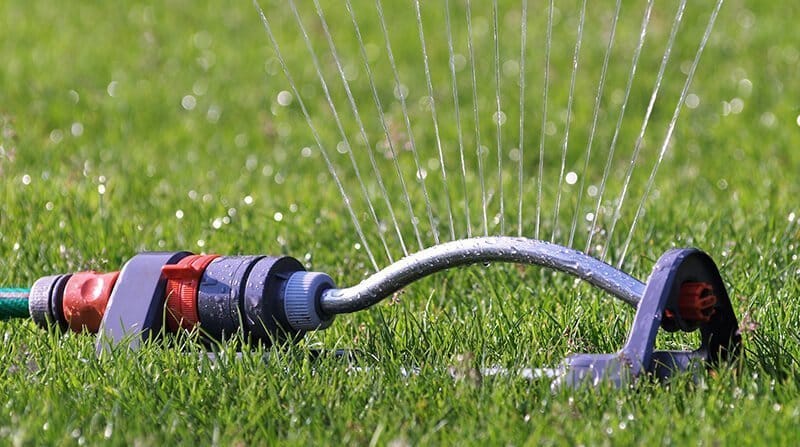
You might be surprised to know that your lawn doesn’t need that much water to thrive and look it’s best.
The amount of water a lawn needs is dependant on several factors including;
- The type of soil your grass grows in
- How fertile your soil is
- The species of grass your lawn is made up of
- How much sun or shade the lawn sits in
That said, as a good rule of thumb, an inch of water per week either from rain or irrigation is all a lawn needs to stay healthy and look good. This will soak into to top 6 inches of soil where most of the grasses roots grow.
So How Much Does Watering a Lawn Cost?
Believe it or not, watering your lawn isn’t expensive.
In an article by This is Money, Andy White, charges expert at the Consumer Council For Water says it typically costs around £1.50 an hour to use a hosepipe if you’re on a water meter.
Depending on your hosepipe and sprinkler system, this might be a bit more, it might cost a bit less.
But let’s say it takes an hour to water an inch deep (you can find out how long it takes by putting a straight-sided container on your lawn and time how long it takes to fill up by an inch).
If you have a 100m2 lawn and your sprinkler system covers 25m2 at a time, you’d need to have the sprinklers on for 4 hours to water the whole lawn.
So let’s do the maths…
4 (one hour per 25m2)
x
£1.50 (the cost per hour of running a sprinkler on a water meter)
=
£6.00
Using this example, if you were to water your lawn for 6 weeks during a hot, dry spell in the summer, it would cost £36.
Investing £36 to keep your lawn from going brown and preventing costly repairs in the autumn is money well spent in my opinion.
The Biggest Mistake People Make When Watering Their Lawns
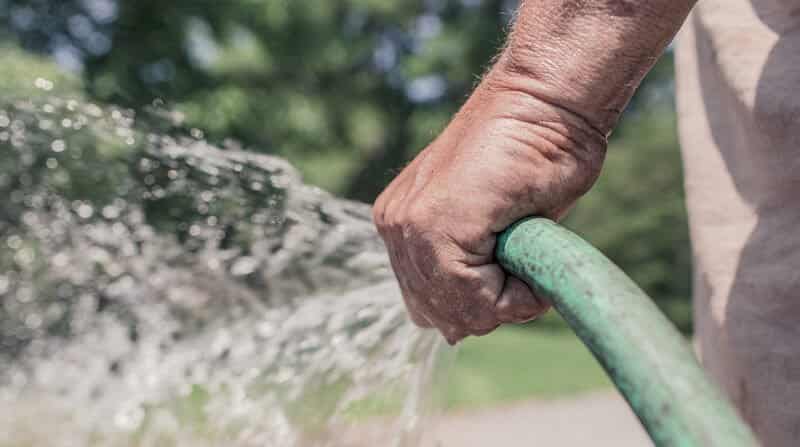
As I said at the beginning of this article, watering the lawn is very simple in theory and easy in practice. Yet, people still do it wrong.
The single biggest mistake I see lawn owners make every summer is that they water their lawns for 15-20 minutes every evening.
If you do this you’re wasting both your time and your money. You could also create problems for yourself.
Here’s why;
Watering your lawn lightly only results in wet grass when the aim should be to get the moisture into the soil (so the grass can consume it via its roots).
A 15-minute sprinkling of water isn’t enough to get the water where it needs to be.
In most cases, the water will sit on the grass overnight and then be evaporated by the sun the day after. This means it has ZERO effect on the health of your grass.
In other cases, this surface moisture can provide the perfect environment for fungal diseases like Pink Patch and Snow Mould to incubate, spore and spread.
So not only is watering lightly in an evening pointless, but it can actually ruin your lawn.
How to Water Your Lawn the Right Way
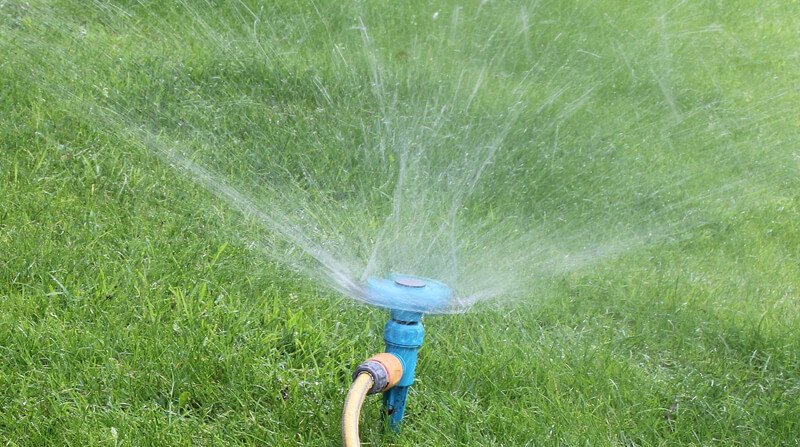
If you shouldn’t water your lawn lightly every evening, how are you supposed to do it?
Completely the opposite.
Water deeply, once a week at the most, in the mornings.
Water Deeply
You should water your lawn for long enough to get the water into the soil by 4-6 inches. This is where the grasses root system is.
Providing an inch of water should be enough to soak into the top 4-6 inches of the turf.
The best way to measure this is by putting a straight-sided container on your lawn when you turn the sprinklers on. When the water is an inch deep in the container, turn the sprinklers off.
Once a Week, at the Most (Unless You Have Laid New Turf)
Grass only needs an inch of water per week to thrive.
Overwatering can result in shallow rooting. If there is a constant supply of moisture near the surface of the lawn, the roots don’t need to grow as deeply.
This not only results in weak roots but the excess surface moisture can cause fungal infections and moss to spore.
The only time you should water more often is when you have laid new turf. In which case, the weather will dictate how often you’d water.
In The Mornings
As you now know, watering at night can cause the onset of fungal disease and moss attacks and watering in the middle of the day is pointless as it’ll evaporate in the midday sun.
That means the only other time to water your lawn in the mornings.
The weather is cool but still warm enough so that fungus doesn’t incubate while giving the water a chance to soak into the soil before the heat of the day causes it to evaporate.
Between 6am – 10am is the perfect times to turn the sprinklers on.
PRO TIP: Aerate your lawn by spiking it with a gardening fork or aeration sandals before watering. This will help the water penetrate the soil more easily.
In Conclusion
So there you have it.
Again, watering the lawn is simple in theory and easy in practice.
The key takeaways are to water deeply, once a week at the most, in the mornings.
Your lawn doesn’t need any more than this.
If rain is present, don’t bother.
And remember, not watering at all is better than watering too much so if in doubt, keep the taps turned off.
Over to You
Does your lawn need watering?
Have you experienced problems due to watering incorrectly?
Questions or suggestions?
Leave a comment below and I’ll jump in a join the discussion.
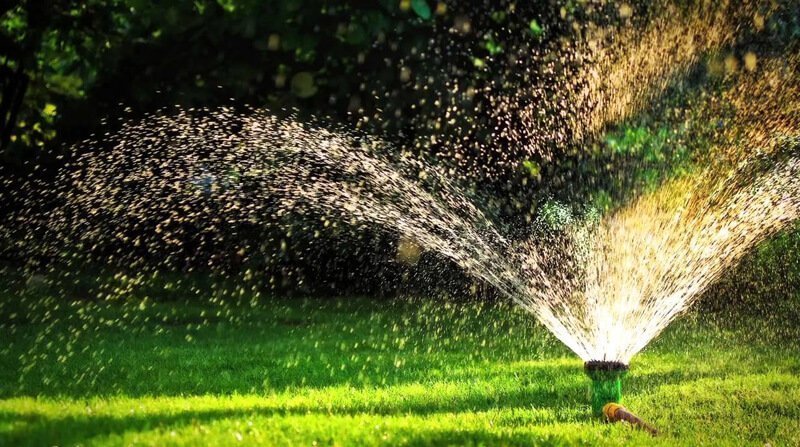

Tim, Thanks ever so much for answering all my lawn watering questions. I was driving myself nuts not knowing if I was under-watering or applying too much. I love the many varieties of grass/plants that grow from the earth, and appreciate their beauty. Understanding that a proper maintenance schedule, including watering, is critical to their health, is easy knowledge to attain and takes the edge off all the worrying otherwise.
Best Regards,
M Walsh
Dearborn Heights, Michigan USA